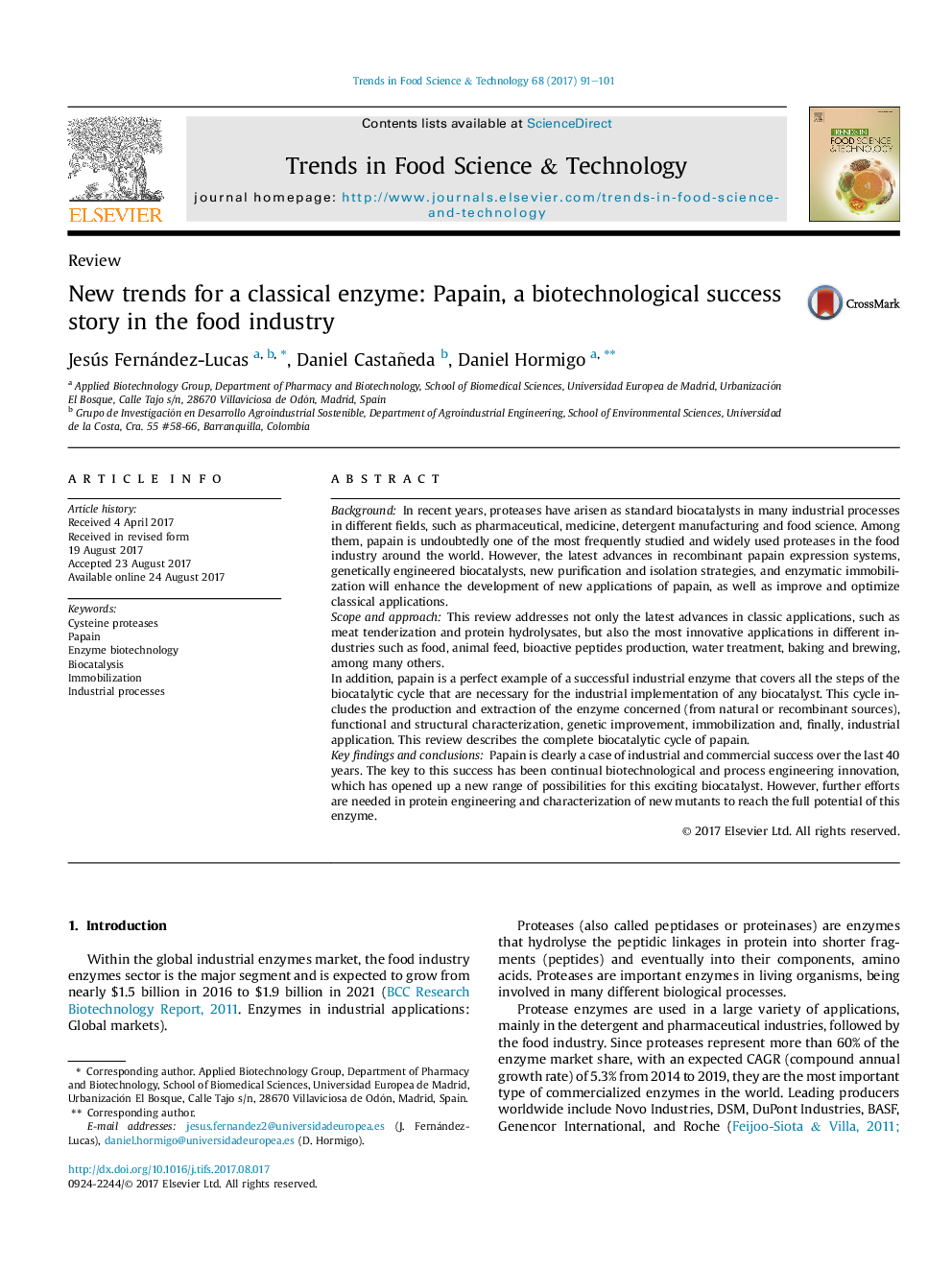| Article ID | Journal | Published Year | Pages | File Type |
|---|---|---|---|---|
| 5523627 | Trends in Food Science & Technology | 2017 | 11 Pages |
â¢Latest advances in genetic engineering, expression and immobilization techniques, will enhance the industrial applications of papain.â¢Most recent trends about the industrial use of papain in food industry are discussed.â¢Novel industrial uses of papain not strictly focused in food industry, but closely related to food science, are reported too.
BackgroundIn recent years, proteases have arisen as standard biocatalysts in many industrial processes in different fields, such as pharmaceutical, medicine, detergent manufacturing and food science. Among them, papain is undoubtedly one of the most frequently studied and widely used proteases in the food industry around the world. However, the latest advances in recombinant papain expression systems, genetically engineered biocatalysts, new purification and isolation strategies, and enzymatic immobilization will enhance the development of new applications of papain, as well as improve and optimize classical applications.Scope and approachThis review addresses not only the latest advances in classic applications, such as meat tenderization and protein hydrolysates, but also the most innovative applications in different industries such as food, animal feed, bioactive peptides production, water treatment, baking and brewing, among many others.In addition, papain is a perfect example of a successful industrial enzyme that covers all the steps of the biocatalytic cycle that are necessary for the industrial implementation of any biocatalyst. This cycle includes the production and extraction of the enzyme concerned (from natural or recombinant sources), functional and structural characterization, genetic improvement, immobilization and, finally, industrial application. This review describes the complete biocatalytic cycle of papain.Key findings and conclusionsPapain is clearly a case of industrial and commercial success over the last 40 years. The key to this success has been continual biotechnological and process engineering innovation, which has opened up a new range of possibilities for this exciting biocatalyst. However, further efforts are needed in protein engineering and characterization of new mutants to reach the full potential of this enzyme.
